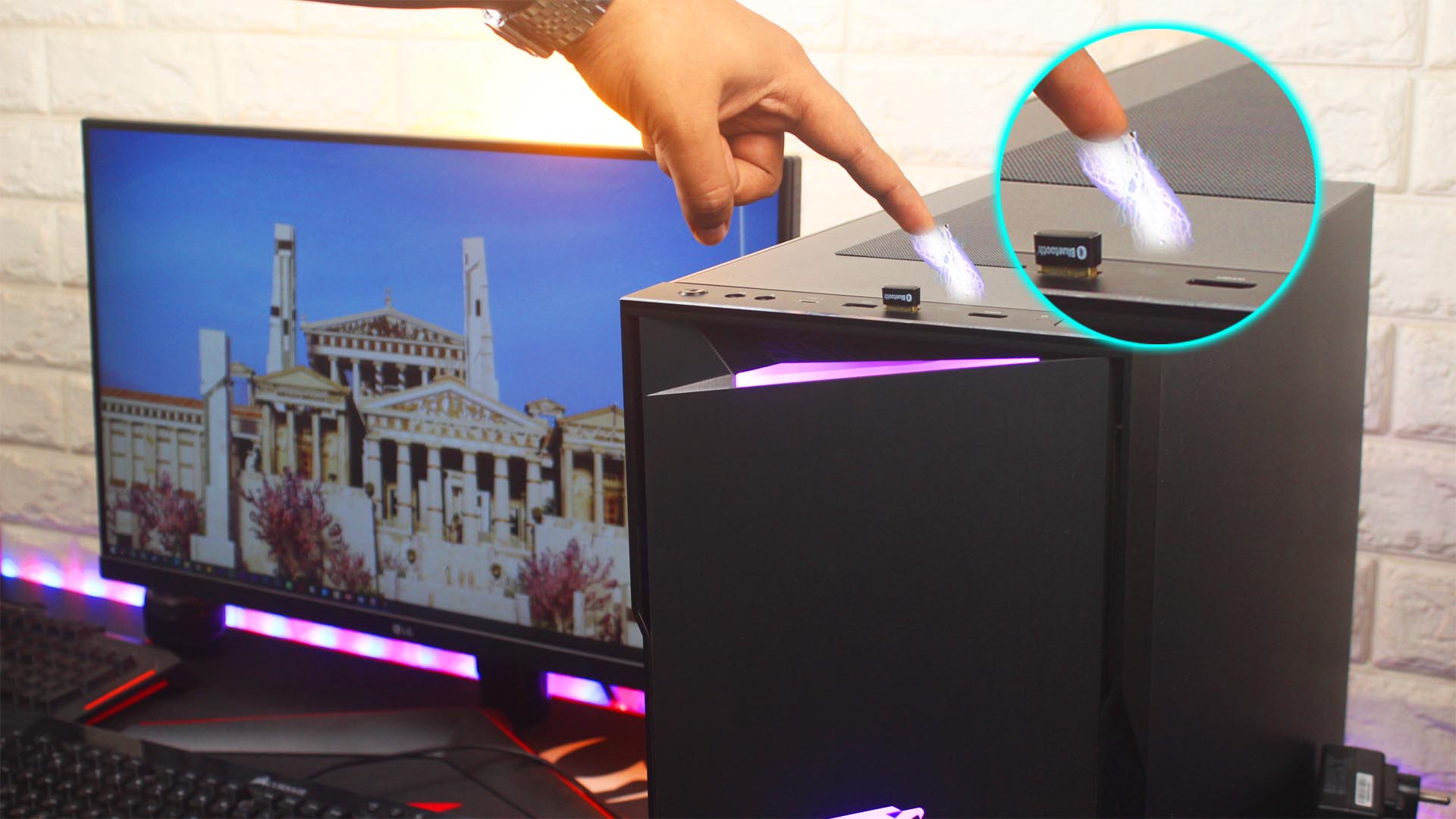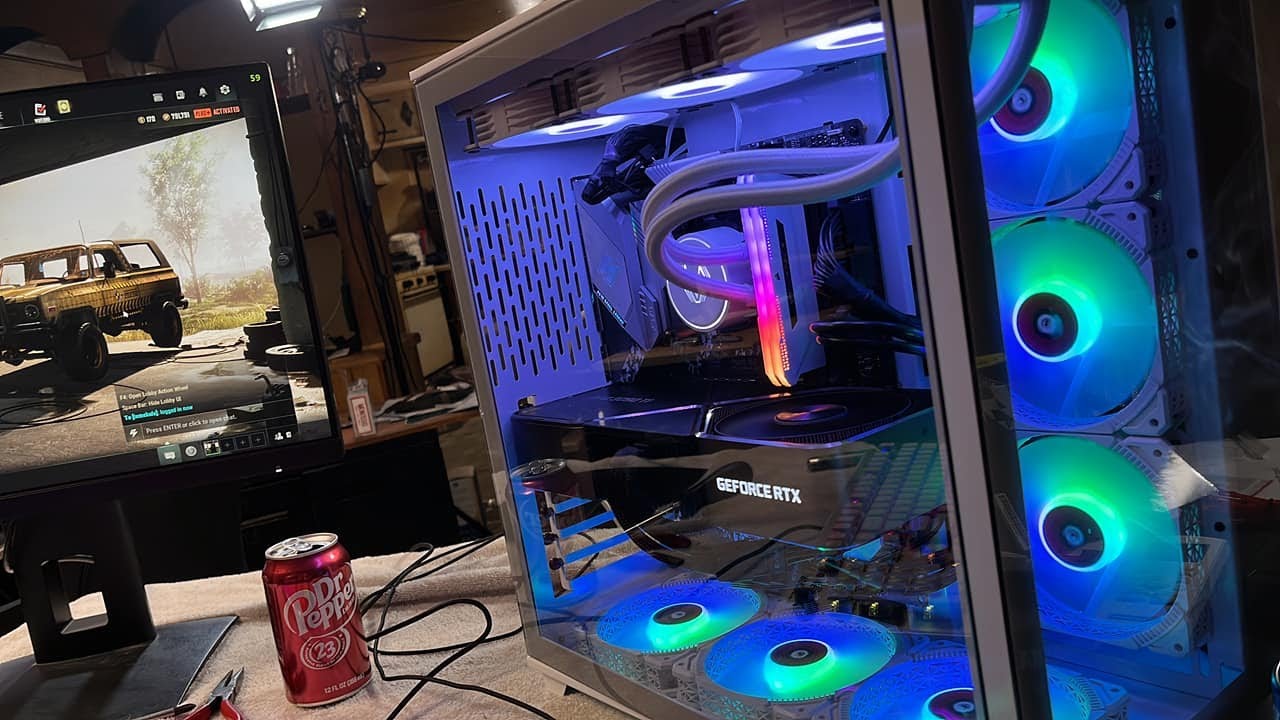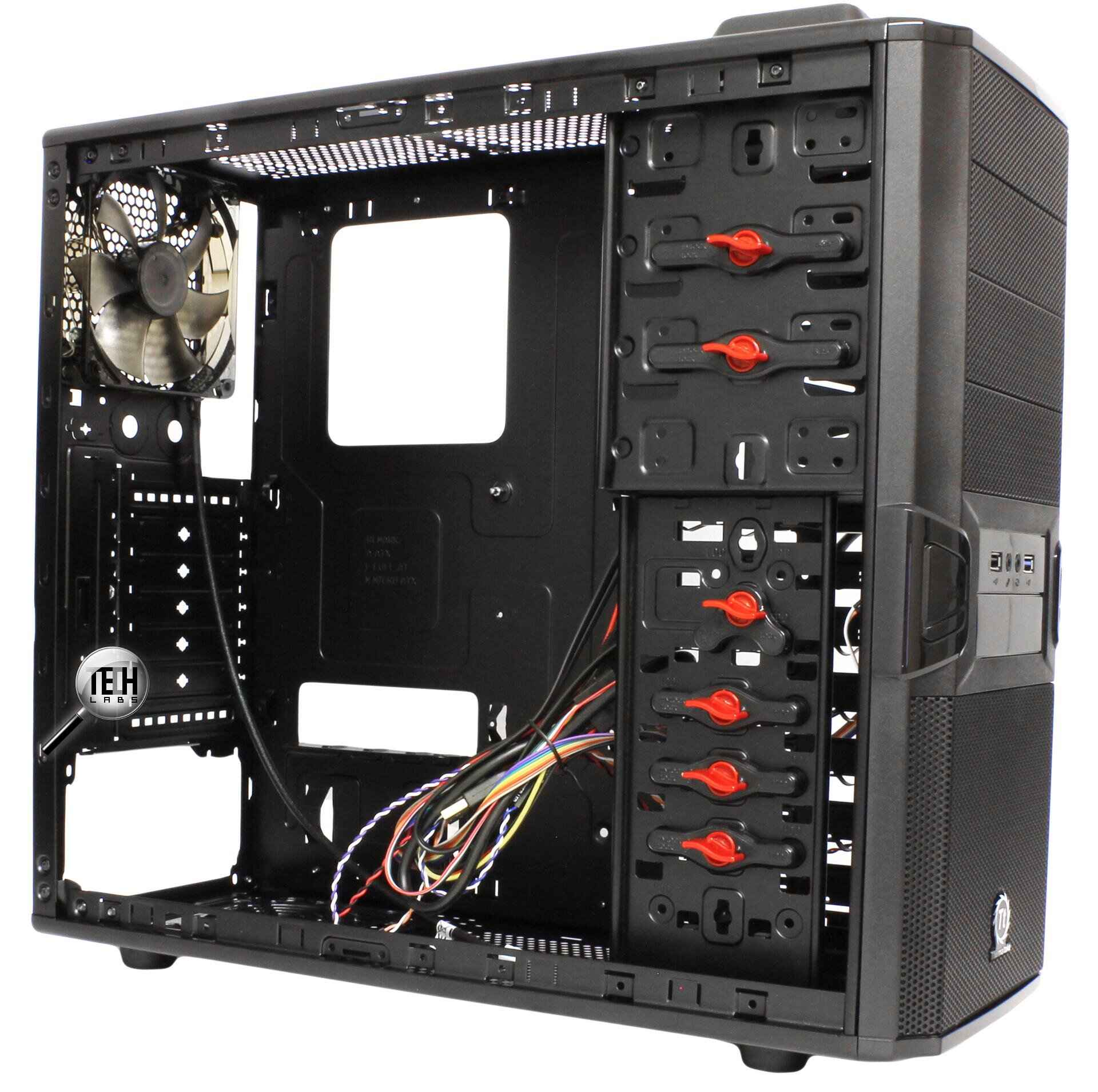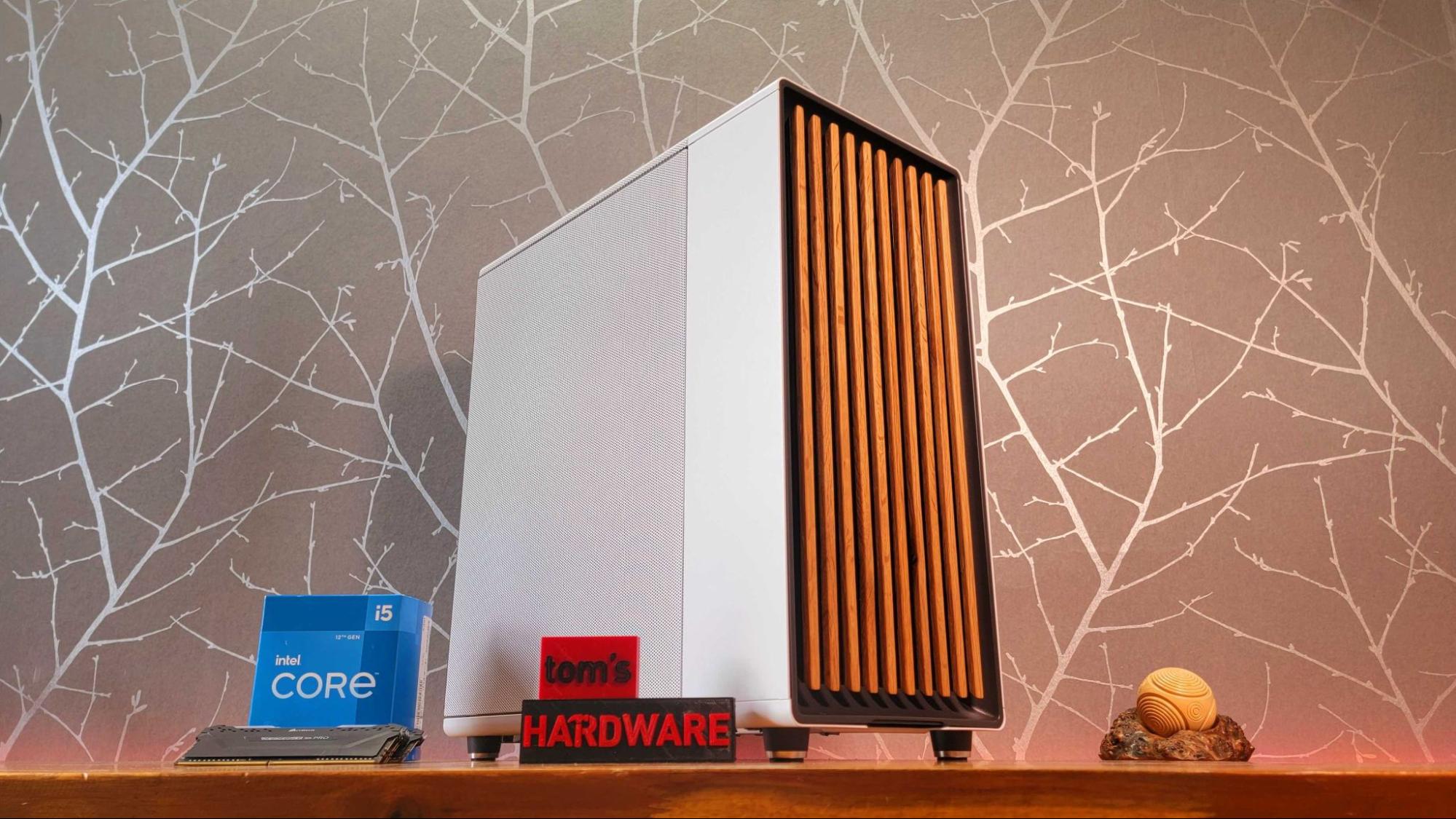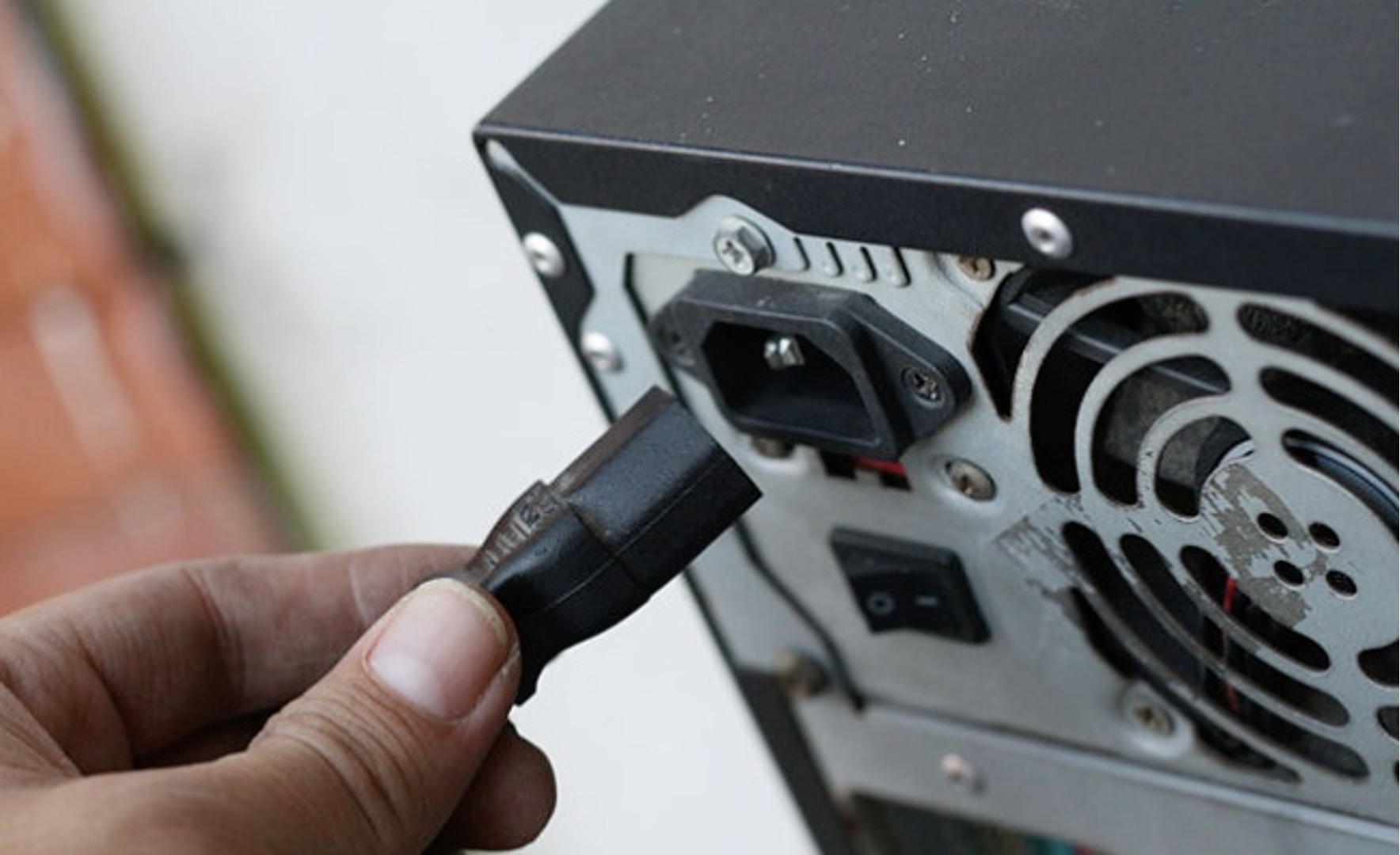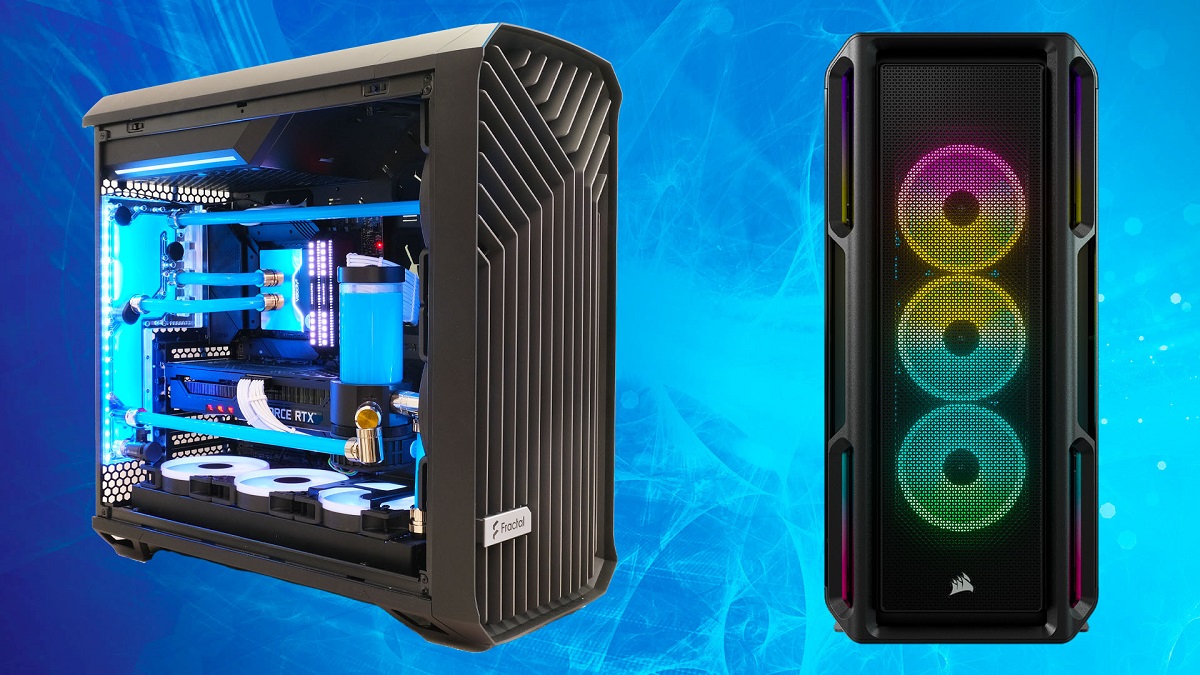Introduction
Have you ever experienced a sudden shock when touching the case of your computer? It can be quite startling and leave you wondering why it happened. In this article, we will explore the phenomenon of getting a shock when touching a PC case and understand the factors that contribute to it.
Static electricity is a common occurrence in our daily lives. It is the build-up of electric charge on the surface of an object, caused by the friction between two materials or the movement of electrons. We often encounter static electricity in various situations, like when rubbing a balloon on our hair or walking across a carpeted floor.
When it comes to computers, static electricity can present a unique set of challenges due to their sensitive electronic components. These components, such as the motherboard, memory modules, and graphics card, are highly susceptible to damage caused by electrostatic discharge (ESD).
Electrostatic discharge, also known as ESD, is the sudden flow of electricity between two electrically charged objects. This discharge can occur when there is a difference in the electrical potential between two objects, creating a path for the electricity to flow. In the case of a PC, when you touch the metal case, the static electricity stored in your body can discharge into the computer, causing a shock.
Now that we understand the basics of static electricity and electrostatic discharge, let’s dive deeper into the role of PC components in facilitating ESD and the factors contributing to PC case shocks. By gaining a better understanding of these factors, we can take steps to prevent them and ensure the safety of our computer components.
Static Electricity and Its Causes
Static electricity is a natural phenomenon that occurs when there is an imbalance of electric charges on the surface of an object. It is caused by the transfer of electrons between two materials, resulting in one material gaining an excess of electrons (negative charge) and the other material losing electrons (positive charge).
There are several common causes of static electricity:
- Friction: When two materials rub against each other, electrons can be transferred from one material to the other. This transfer of electrons creates an electric charge on the surface of the materials.
- Induction: Static electricity can also be generated through the process of induction. This occurs when a charged object is brought near a neutral object, causing a separation of electric charges in the neutral object.
- Conduction: Conduction is the transfer of static electricity from one object to another through direct contact. If a charged object touches a neutral object, the electrons can flow between them, equalizing the charge.
When it comes to computers, static electricity can be particularly problematic. The sensitive electronic components of a PC are highly susceptible to damage from electrostatic discharge (ESD). Even a small amount of static electricity can potentially cause irreparable harm to these components.
It’s important to note that static electricity is more prevalent in certain environments or weather conditions. Low humidity levels and dry air can increase the likelihood of static electricity buildup. Additionally, synthetic materials like nylon or polyester can generate and hold static charges, increasing the risk of ESD.
Now that we have a better understanding of static electricity and its causes, let’s delve into the concept of electrostatic discharge (ESD) and its impact on PC components in the next section.
Understanding Electrostatic Discharge (ESD)
Electrostatic discharge (ESD) is the sudden flow of electricity between two objects with different electrical potentials. It occurs when the charge built up on one object finds a path to discharge into another object. In the context of computers, ESD can be a significant threat to the sensitive electronic components that make up a PC.
ESD can manifest in different ways, including sparks, arcs, or simple discharges that are not visible to the naked eye. These discharges can occur between an individual and an object or between two objects themselves. When it comes to PCs, the most common form of ESD is the discharge from a human body to a computer component, often when touching the metal case.
The discharge of static electricity from a human body into a PC can have detrimental effects. The high voltage and the rapid discharge of electrons can damage or destroy delicate integrated circuits and microchips. Additionally, ESD can cause latent damage, leading to decreased performance or the eventual failure of electronic components over time.
It’s important to note that ESD damage may not be immediately apparent. The effects of a static discharge can weaken a component, leading to intermittent failures or subtle malfunctions that are difficult to diagnose. Therefore, taking steps to prevent ESD is crucial in maintaining the longevity and reliability of your PC.
Preventing electrostatic discharge (ESD) requires a combination of understanding the factors that contribute to ESD and implementing appropriate preventive measures. In the following sections, we will explore the role of PC components in facilitating ESD and discuss practical steps you can take to minimize the risk of ESD-related damage to your computer.
The Role of PC Components in ESD
Understanding the role of PC components in facilitating electrostatic discharge (ESD) is crucial in taking effective measures to prevent damage to your computer. Each component within a PC has its own susceptibility and tolerance to static electricity, making it important to be aware of their vulnerabilities.
Here are some key PC components and their roles in ESD:
- Motherboard: The motherboard is the central printed circuit board (PCB) in a computer that connects and controls various hardware components. It contains sensitive electronic circuits, such as the CPU socket, memory slots, and expansion card slots. ESD can cause irreversible damage to these circuits, leading to malfunctioning or complete failure of the motherboard.
- Memory Modules: RAM modules are essential for storing and accessing data in a computer. These modules also have sensitive components that can be easily damaged by static electricity. ESD can corrupt the data stored in the memory or render the module completely inoperable.
- Graphics Card: A graphics card processes and renders visual information on a computer’s display. Similar to the motherboard, it contains delicate components that can be vulnerable to ESD. Damage to a graphics card can result in visual artifacts, poor performance, or complete failure.
- Hard Drive and Solid-State Drive: These storage devices are responsible for storing all your data. While they are designed to be more robust than other components, ESD can still impact their performance and potentially lead to data corruption or loss.
- Power Supply Unit (PSU): The PSU converts AC power into DC power to supply the computer’s components. While it may seem less susceptible to ESD, a discharge into the PSU can disrupt its electrical output and potentially damage other connected components.
It’s important to handle these components with care and take preventive measures to minimize the risk of ESD-related damage. In the next section, we will explore the factors that can contribute to PC case shocks and discuss practical steps to prevent them.
The Human Body as a Conductor
When it comes to electrostatic discharge (ESD) and PC case shocks, the human body plays a crucial role as a conductor of static electricity. Understanding how the human body interacts with static charges can help us comprehend why we may experience shocks when touching a PC case.
The human body is a complex electrical system that can store and generate static electricity. When we walk across a carpeted surface or touch objects, the friction between our bodies and the materials can cause the transfer of electrons, resulting in static charge build-up.
Our body acts as a conductor in the presence of an electrical potential difference. When we approach an object with a different charge, such as a PC case, the excess electrons in our body can discharge to the lower-charged object. This discharge manifests as a shock, and its severity can vary depending on factors such as the level of static charge stored in our body, the distance between us and the object, and the electrical grounding of the object.
It is important to note that some individuals may experience PC case shocks more frequently than others. This can be attributed to several factors, including body perspiration, clothing material, and shoes. Moisture on the skin makes it a better conductor, reducing the accumulation of static charge and the likelihood of experiencing shocks.
Conversely, wearing clothing made of synthetic materials, such as polyester or nylon, can increase the chances of static charge generation and build-up. Furthermore, walking on materials like carpets or rugs that generate static electricity can also contribute to the accumulation of charge in our bodies.
To minimize the occurrence of shocks, it is advisable to discharge any built-up static electricity from your body before touching sensitive computer components. This can be done by touching a grounded object, such as a metal faucet or the bare metal on a power outlet, before accessing the internal parts of your PC.
In the next section, we will discuss the various factors that can contribute to PC case shocks and explore practical measures to prevent them.
Factors Contributing to PC Case Shocks
Several factors can contribute to the occurrence of shocks when touching a PC case. Understanding these factors can help us identify potential sources of static electricity and implement preventive measures to minimize the risk of experiencing shocks.
Here are some common factors that contribute to PC case shocks:
- Dry Conditions: Low humidity levels can increase the likelihood of static electricity build-up. Dry air allows static charges to accumulate on objects, including the PC case. This makes it more likely for a discharge to occur when touching the case.
- Clothing and Fabrics: As mentioned earlier, the clothes we wear can impact static electricity generation. Wearing synthetic fabrics, such as polyester or nylon, can cause static charges to build up on our bodies. When we come into contact with the PC case, these charges can discharge, resulting in shocks.
- Walking on Synthetic Carpets: Walking on carpets made from synthetic materials can generate static electricity due to friction between our shoes and the carpet fibers. This static charge can transfer to our bodies and increase the risk of shocks when touching the PC case.
- Improper Grounding: The grounding of the PC case is crucial in minimizing the likelihood of shocks. If the case is not properly grounded, static charges may accumulate on the case and discharge when touched. Ensuring that the PC case is properly grounded can significantly reduce the risk of experiencing shocks.
- Electrostatic Discharge (ESD) During Component Installation: When handling PC components during installation or upgrades, it is important to take precautions to avoid ESD. Improper handling or touching sensitive components without proper grounding can lead to static discharge, potentially damaging the components and causing shocks when touching the case afterward.
By being aware of these contributing factors, you can take proactive steps to prevent PC case shocks. Implementing measures such as maintaining humidity levels, choosing clothing made of natural fibers, using anti-static mats or wristbands, and ensuring proper grounding of the PC case can greatly minimize the risk of experiencing shocks while using your computer.
In the next section, we will explore practical ways to deal with static electricity and prevent shocks when touching a PC case.
Dealing with Static Electricity: Prevention
Preventing static electricity buildup and minimizing the risk of shocks when touching a PC case requires implementing preventive measures. By following these guidelines, you can greatly reduce the likelihood of experiencing static shocks and protect your computer components:
- Maintain Proper Humidity: Low humidity can contribute to static electricity buildup. Using a humidifier in dry environments, especially in winter, can help maintain optimal humidity levels and reduce static charges.
- Wear Clothing Made of Natural Fibers: Natural fabrics, such as cotton or wool, are less likely to generate static charges compared to synthetic materials. Opt for clothing made of these fibers to minimize static electricity buildup.
- Avoid Synthetic Carpeting: If possible, avoid walking on synthetic carpets or rugs, as they can generate static charges. Opting for carpets made of natural fibers or using anti-static mats can help reduce static electricity generation.
- Properly Ground the PC Case: Ensuring that the PC case is properly grounded is crucial in preventing static shocks. This involves connecting the case to a grounded electrical outlet or using an anti-static wristband while working inside the computer. Proper grounding allows static charges to safely dissipate to the ground rather than accumulating on the case.
- Use Anti-Static Measures: Consider using anti-static tools and equipment when working with PC components. Anti-static mats, wristbands, and gloves can help discharge any static electricity from your body, minimizing the risk of damaging sensitive components or experiencing shocks.
- Avoid Touching Sensitive Components: When handling computer components, avoid touching sensitive areas like the gold connectors or chips directly. Instead, hold components by their edges or use anti-static bags to protect them from ESD.
- Power Down and Unplug: Before performing any internal cleaning or maintenance, make sure to power down the PC and unplug it from the electrical outlet. This reduces the risk of accidental discharge and ensures your safety while working on the computer.
- Regularly Clean Dust and Debris: Accumulated dust and debris can contribute to static electricity buildup. Regularly clean your PC, especially the intake and exhaust vents, to minimize the chances of static charges generating within the case.
By implementing these preventive measures, you can greatly reduce the risk of static shocks while handling your PC and ensure the longevity and reliability of your computer components.
In the next section, we will discuss the proper grounding of the PC and yourself as an additional step in preventing static electricity-related issues.
Grounding the PC and Yourself
Grounding the PC and ensuring that you are properly grounded are essential steps in preventing static electricity-related issues. Grounding provides a safe path for static charges to dissipate, minimizing the risk of damage to computer components and preventing shocks. Here’s how you can effectively ground the PC and yourself:
Grounding the PC:
- Use a Grounding Wrist Strap: It is recommended to use a grounding wrist strap when working inside the PC. This strap connects you to a grounded object, such as a metal part of the PC case or an actual grounding wire, allowing any built-up static charge to safely discharge.
- Connect the PC to a Grounded Outlet: Ensure that the power cord of your PC is connected to a properly grounded electrical outlet. A grounded outlet has a third prong (the grounding pin) that provides a direct connection to the ground, allowing static charges to be safely dissipated.
- Use an Anti-Static Mat: Working on an anti-static mat can provide an additional layer of grounding. These mats are designed to dissipate static charges and prevent them from accumulating on the work surface or the PC components.
Grounding Yourself:
- Wear a Grounding Wrist Strap: As mentioned earlier, wearing a grounding wrist strap that is properly connected to a grounded object can help discharge any static electricity from your body. Make sure the strap is snugly fitted and in direct contact with your skin.
- Touch a Grounded Object: Before working inside the PC or touching sensitive components, touch a grounded object to discharge any built-up static charge from your body. This can be a metal surface, such as a metal faucet or the bare metal on a power outlet.
- Avoid Movement and Static-Generating Surfaces: Limiting your movement during PC maintenance can help minimize static electricity buildup. Additionally, avoid working on surfaces that generate static charges, such as synthetic carpets or rugs, as they can contribute to the accumulation of static electricity on your body.
By properly grounding the PC and yourself, you significantly reduce the risk of static electricity-related issues. These grounding practices ensure the safe handling of computer components, minimize the risk of damage from electrostatic discharge (ESD), and help maintain the overall functionality and reliability of your PC.
In the next section, we will discuss proper handling techniques to further protect sensitive PC components during installation and maintenance.
Handling Sensitive Components Properly
Proper handling of sensitive PC components is crucial in preventing damage from static electricity and ensuring the longevity and functionality of your computer. By following these guidelines, you can minimize the risk of electrostatic discharge (ESD) and protect sensitive components during installation and maintenance:
- Avoid Touching Sensitive Areas: When handling sensitive components like memory modules or graphics cards, avoid touching the gold connectors or chips directly. Finger oils and static charges can damage these delicate surfaces. Instead, hold components by their edges or use anti-static gloves when necessary.
- Use Anti-Static Bags: Sensitive components, especially those that are not immediately installed, should be stored in anti-static bags. These bags are designed to prevent the accumulation of static charges and protect the components from ESD damage.
- Minimize Movement: Limiting movement when handling components can help reduce the generation of static charges. Avoid unnecessary walking or shuffling on carpets, as these actions can create friction and increase the risk of static electricity buildup.
- Work on a Static-Free Surface: Choose a clean, anti-static work surface for component installation or maintenance. Anti-static mats or workbenches can dissipate static charges and prevent them from accumulating on the surface or the components.
- Avoid Working in Dry Conditions: Low humidity levels increase the likelihood of static electricity buildup. If possible, perform PC maintenance or component installation in environments with moderate humidity or use a humidifier to maintain optimal moisture levels.
- Discharge Static Electricity: Before touching sensitive components or the inside of the PC, discharge any static electricity from your body by touching a grounded object like a metal faucet or the bare metal on a power outlet.
- Handle with Care: Use gentle and careful movements when installing or removing components. Avoid applying excessive force or bending PCBs, as this can lead to breakage or irreversible damage to the component.
Following these handling techniques ensures that sensitive PC components remain protected during installation and maintenance. By minimizing the risk of ESD and avoiding errors that can lead to component damage, you can maintain the performance and reliability of your computer.
In the next section, we will conclude our discussion and summarize the key points regarding static electricity and PC case shocks.
Conclusion
Understanding static electricity and its effects on PC components is essential for preventing damage and ensuring the longevity and reliability of your computer. In this article, we explored the phenomenon of getting a shock when touching a PC case and identified the factors contributing to it.
We learned that static electricity is caused by the transfer of electrons between two materials, resulting in an imbalance of electric charges. Electrostatic discharge (ESD) occurs when these charges find a path to discharge, often resulting in shocks when touching a PC case.
Several factors contribute to PC case shocks, including dry conditions, clothing materials, synthetic carpeting, improper grounding, and ESD during component installation. By being aware of these factors, we can take preventive measures to reduce the risk of static electricity-related issues.
We discussed the importance of grounding the PC and ourselves to ensure the safe dissipation of static charges. Proper grounding techniques, such as using grounding wrist straps, connecting the PC to a grounded outlet, and working on anti-static surfaces, significantly minimize the chances of experiencing shocks and damaging sensitive components.
We also emphasized the significance of handling sensitive components properly. By avoiding direct contact with sensitive areas, using anti-static bags, minimizing movements on static-generating surfaces, and working on static-free surfaces, we can protect these components from ESD damage.
By following the guidelines presented in this article, you can effectively deal with static electricity, prevent PC case shocks, and safeguard the performance and reliability of your computer. Remember to maintain optimal humidity levels, wear clothing made of natural fibers, properly ground your PC and yourself, and handle sensitive components with care.
By implementing these practices, you can minimize the risk of static electricity-related issues, ensure the safe operation of your computer, and prolong the lifespan of your PC components.







